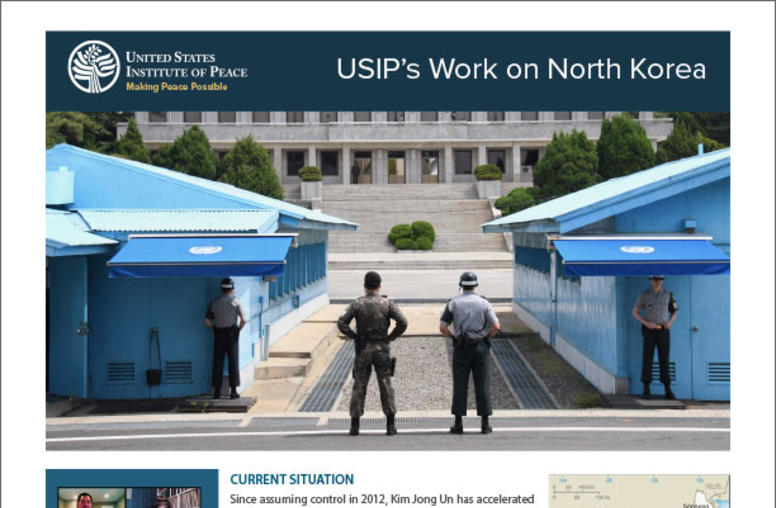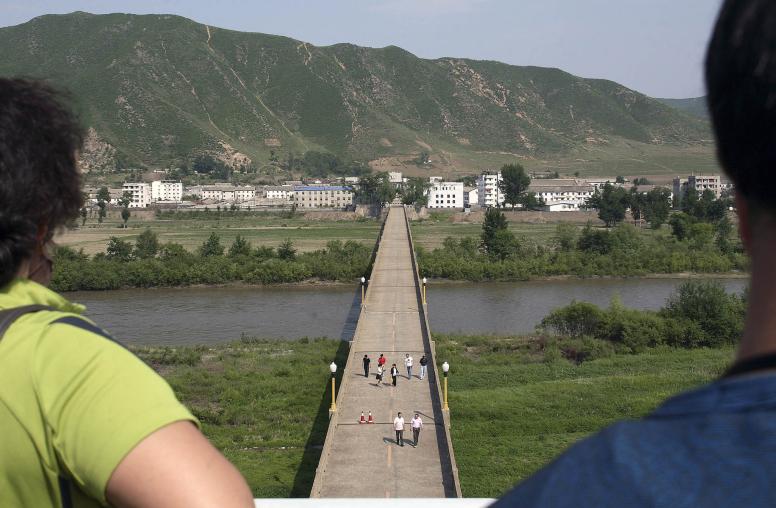U.S.-North Korea talks just broke down. Here’s what might happen next.
Does Pyongyang have a playbook for the next few months?
Pyongyang and Washington walked away from the negotiating table in Sweden this past weekend — with divergent statements on the first working-level meeting to be held since negotiations broke down at the February summit between President Trump and Kim Jong Un in Hanoi.

The North Koreans declared that the most recent talks had broken down because the United States had arrived at the negotiations with an “empty hand.” The U.S. State Department countered that its negotiators “brought creative ideas and had good discussions with its DPRK counterparts,” referring to North Korea by the initials of its formal name, the Democratic People’s Republic of Korea. The North Koreans also flatly rejected the U.S. suggestion that talks resume two weeks later, stating they would not engage until Washington withdraws its “hostile policy” in a “complete and irreversible” fashion.
Pyongyang’s rhetoric and behavior will sound and look familiar to even casual observers of North Korea. But it’s not entirely clear whether North Korea’s reaction is a bargaining tactic to move negotiations along, secure another summit with Trump and ultimately clinch a deal—or a stalling tactic to drag out negotiations. It’s very possible that Pyongyang has yet to decide on a playbook for the coming months and that Kim will continue to adjust his strategy with one eye on internal political dynamics at home and the other on domestic political dynamics in the United States.
What happens next? Here are three scenarios on a spectrum of potential outcomes:
Scenario 1: Talks break down for good
North Korea could break its own moratorium on nuclear and long-range missile testing at some point next year, abandoning prospects for negotiations in the near to midterm future. This scenario is plausible, given Kim’s repeated threats that he will find a “new way” to defend his country’s sovereignty if negotiations do not succeed by the close of 2019.
Kim would then burnish his strongman credentials with regime insiders who may be skeptical of his purported shift away from North Korea’s traditional “byungjin” strategy of pursuing both nuclear weapons and economic development to focus only on the latter. This shift has yet to bring significant benefits to his country. And the continuation of U.S.-South Korea military exercises, though modified in scope and size, are apparently an embarrassment to Kim, who views this as a violation of Trump’s promise at the June 2018 Singapore summit to suspend “war games.”
Returning to the days of extreme brinkmanship could provide Kim with a rally effect at home—but blow the chances of any sanctions relief or other concessions in the near future. He would also damage any diplomatic mileage he has built over the past two years.
It’s highly possible that Trump could interpret Kim’s moves as a personal affront and return to the days of “fire and fury.” After all, Trump sees the pause on nuclear and long-range missile tests as his signature accomplishment in diplomacy with North Korea.
Kim would also lose an advocate in Seoul, amid growing South Korean skepticism of President Moon Jae-in’s outreach to Pyongyang. Furthermore, resumed testing would undermine Kim’s recent rapprochement with Chinese President Xi Jinping, given Beijing’s enthusiasm for North Korea’s turn toward economic development—and its interests in a stable and denuclearized Korean Peninsula.
Scenario 2: Let’s make a (quick) deal
There’s another possibility: North Korea rushes to make a deal with Trump, gambling that the White House is eager for a victory because of the ongoing impeachment inquiry and the 2020 U.S. elections around the corner. Pyongyang may also believe that its chances may never be as good as with the current U.S. president, who considers Kim a “friend.” A looming deadline for all North Koreans working abroad to return home by the end of this year, as mandated by a 2017 U.N. Security Council resolution, may add urgency, as well.
But it’s unclear just what kind of deal would sufficiently satisfy both sides. Another vague deal like the one that emerged out of Singapore or a “big deal” attempted in Hanoi doesn’t seem likely. An interim agreement that includes limited sanctions relief and security guarantees in exchange for a freeze or limited rollback of North Korea’s nuclear program might be possible with compromises on both sides. But faithful implementation would be another story.
Seoul would be the biggest cheerleader for a quick interim deal. The Moon administration wants to invite Kim to a Korea-ASEAN special summit in Busan next month and pursue other inter-Korean efforts, including economic cooperation and measures to reduce military tension. Beijing would also welcome progress as long as there’s no threat to its own security interests.
But many analysts in the United States, Japan and South Korea would watch closely and protest any perceived inadequacies in a deal that fails to sufficiently address verification mechanisms and the full range of North Korea’s missile threat.
Scenario 3: More of the same
A third scenario sees North Korea dragging out negotiations while episodically talking and engaging in muscle-flexing activities, such as last week’s underwater ballistic missile test.
This would be an easy default when more-dramatic options contain risks for all parties. North Korea buys time as it continues to expand its nuclear and missile arsenals. It won’t thrive, but the regime will survive through sanctions evasion and limited but life-sustaining trade with China.
Beijing would be amenable to keeping the North Korea nuclear crisis at a low boil while it tackles other pressing problems, from Hong Kong to the U.S.-China trade war. Washington and, to a lesser degree, Seoul might also prefer to keep talking rather than reach a deal. A true deal with North Korea, after all, would invite scrutiny and almost inevitably fall short of fully tackling other tough issues, from human rights to North Korean cyber aggression.
While it’s tempting to predict which scenario is more likely than the others, the past three years have been full of unexpected twists, and there may be more surprises to come.
This article was first published on October 11 in The Monkey Cage at the Washington Post.



